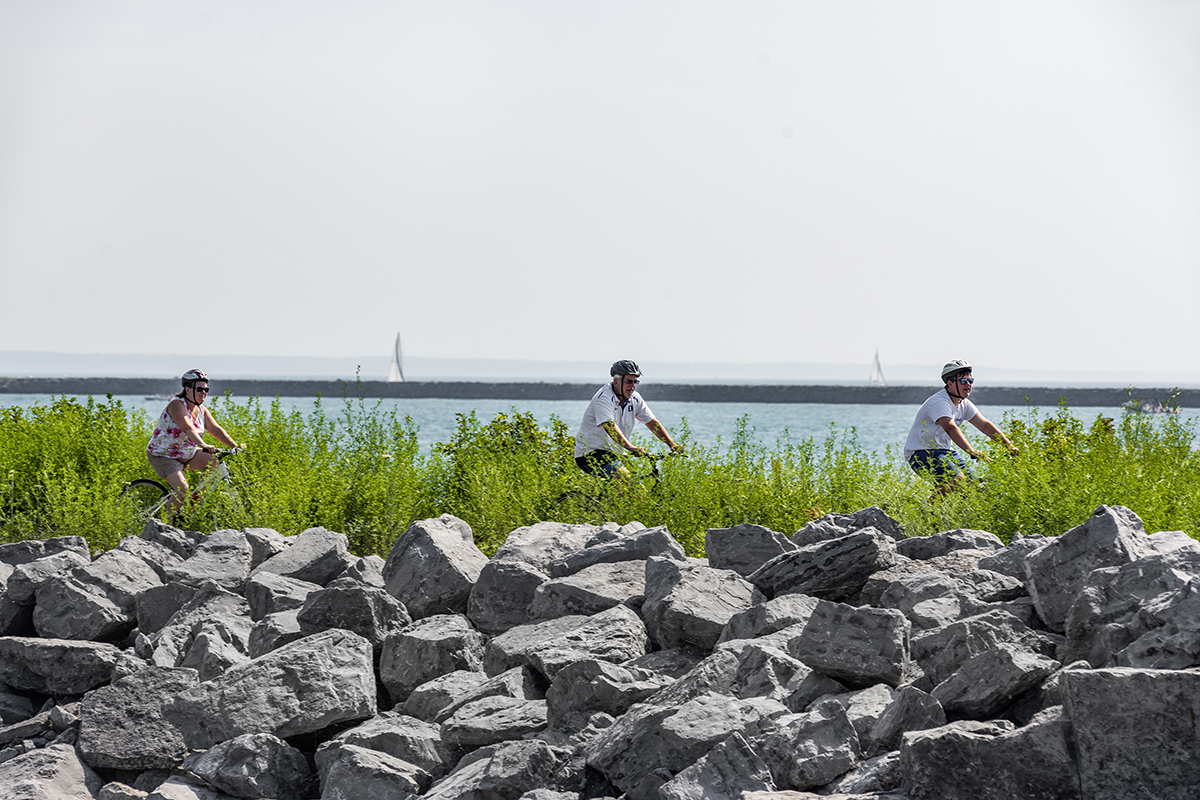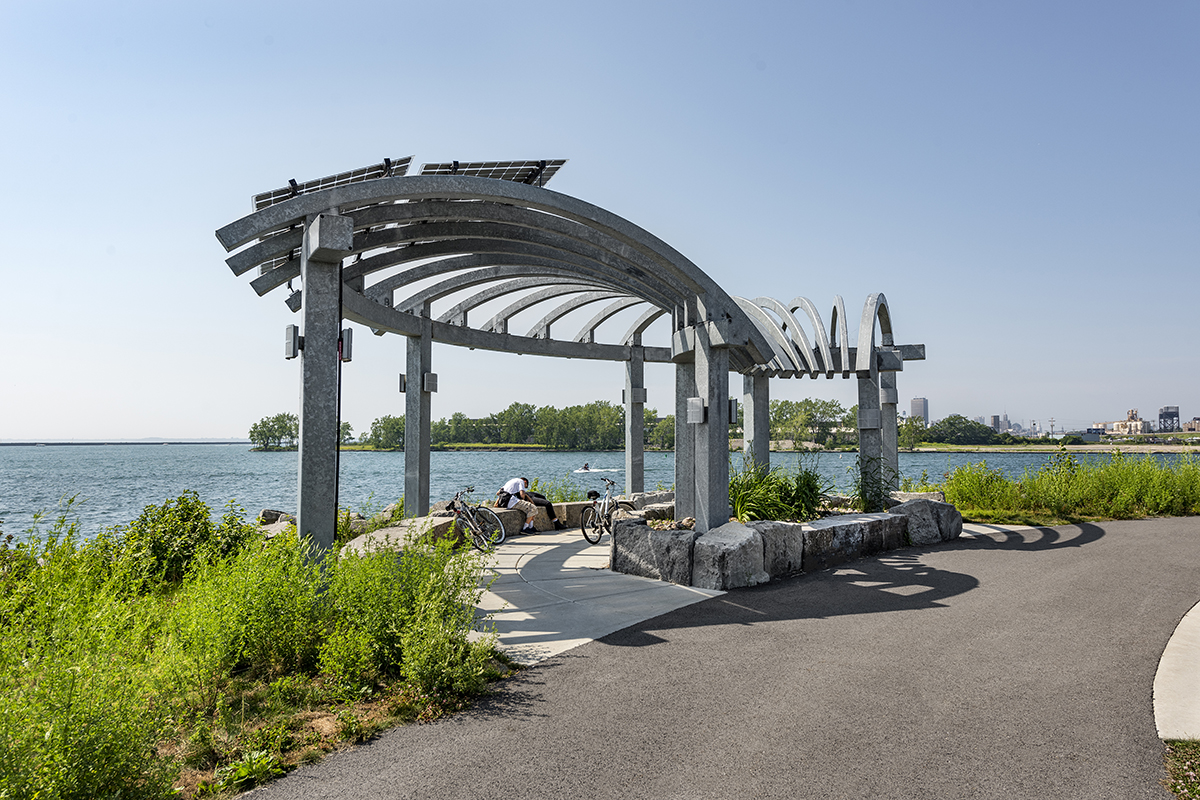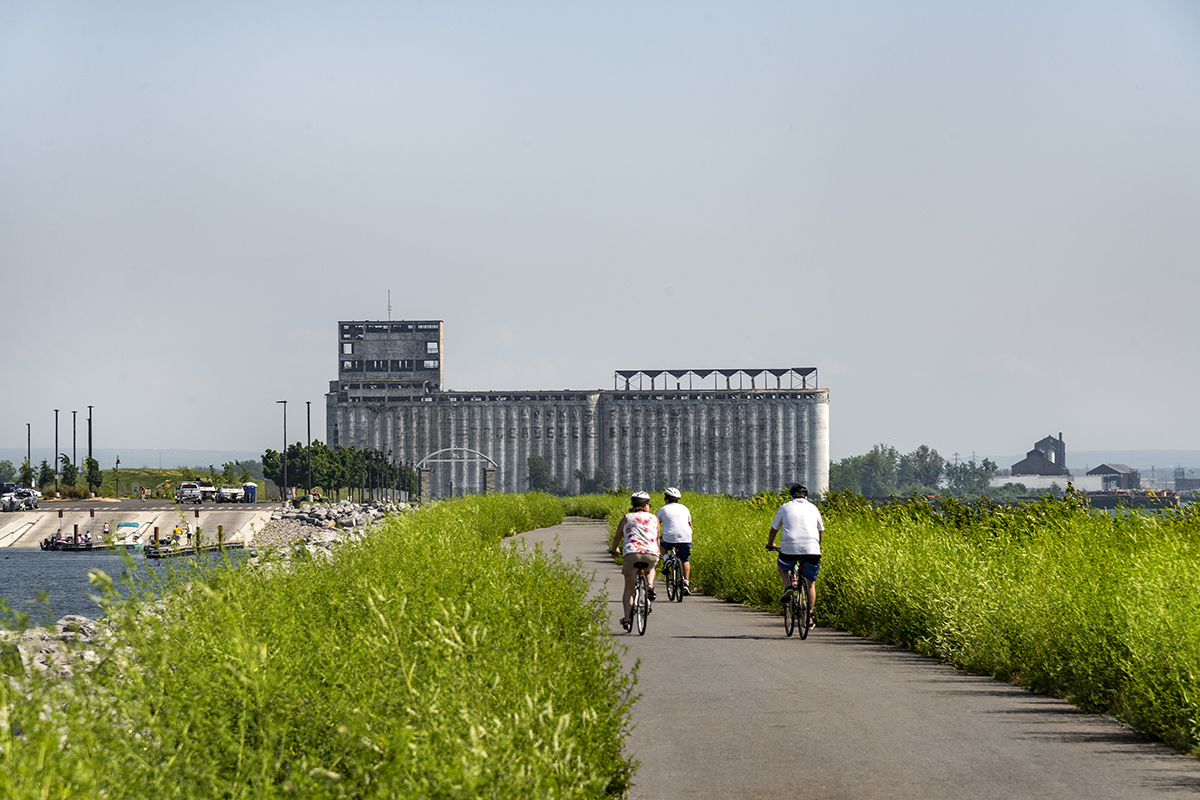TWMLA teamed with WSP|Parsons Brinckerhoff to create a master plan and a multi-phased design and construction strategy for this new 200-acre park on Buffalo’s Outer Harbor waterfront on Lake Erie.
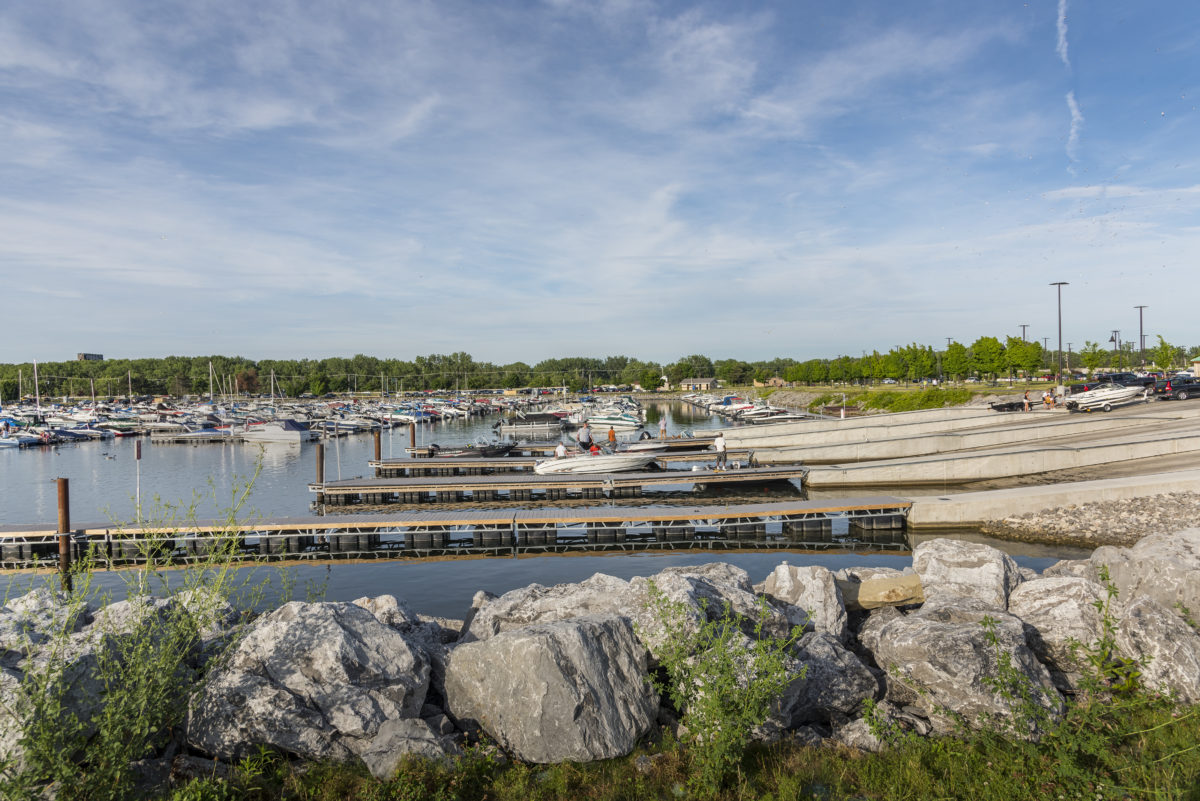
The park creation was enabled by a recent transfer of Lake Erie waterfront from the Niagara Frontier Transportation Authority to the state. Now the newest park in the state park system, Buffalo Harbor State Park is the first in the City of Buffalo, and improves public access to previously underutilized waterfront.

The state park is the southern anchor to the rapidly developing Buffalo waterfront. TWMLA developed the master plan for the 200 acre park to guide the creation of the park. The park includes a destination playground, picnic pavilions, a 1,000 boat marina and boat launch, a publicly accessible breakwall, and includes connectivity to an expanding system of multi-use paths and pedestrian resources.
A multi-use phased implementation plan was developed to minimize disruption to the peak summer use of the park.

Like most of Buffalo’s waterfront the site has an industrial legacy, making site reuse challenging. The TWMLA consultant team identified areas of proposed environmental cap, and used excavated soils to create topography to mitigate winds off Lake Erie and offer elevated viewing of the lake.

TWMLA designed the destination playground, picnic pavilions, multi-use greenspace, and event plaza. The vision for the playground and greenspace was to create a regional attraction to attract users and host multiple programs. The playground was designed around a nautical theme, to evoke themes of the Great Lakes.
Careful plant selection and establishment practices were necessary to tolerate the exposed position and harsh winds off the lake.
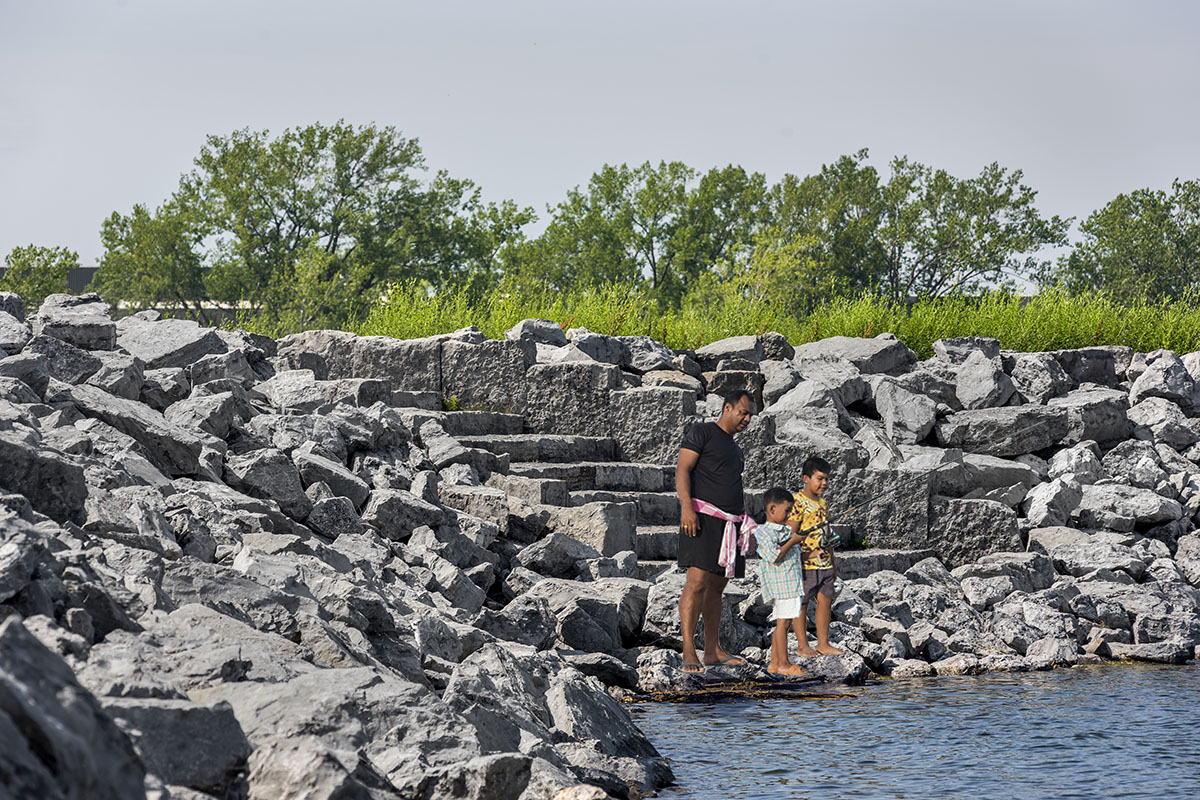
Improvements to the marina expanded capacity and lengthened the season of operations. Site circulation was greatly improved, separating and clarifying boat launch traffic. The public was invited to experience the breakwall with a new multi-use path, shade structures, with fishing access directly to the water’s edge.
